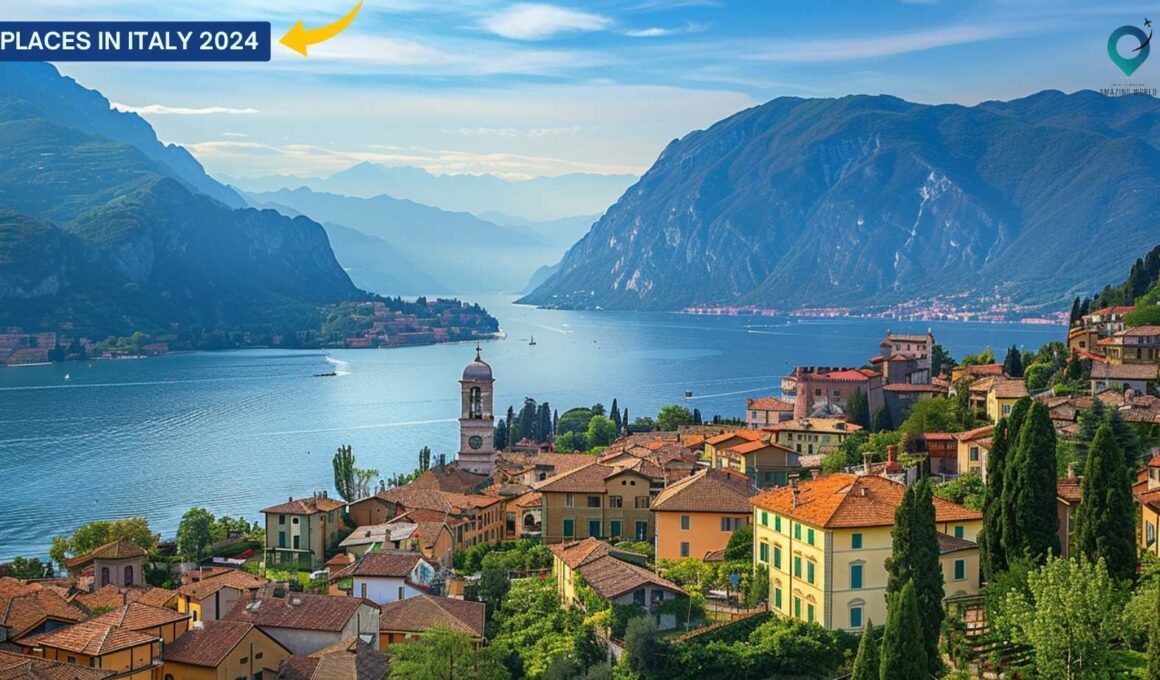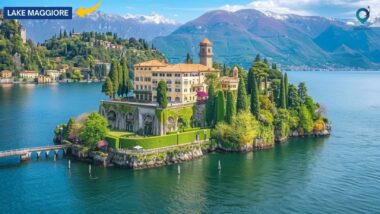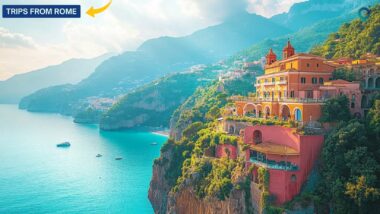Where to Travel in Italy in 2025: 20 Breathtaking Must-Visit Places
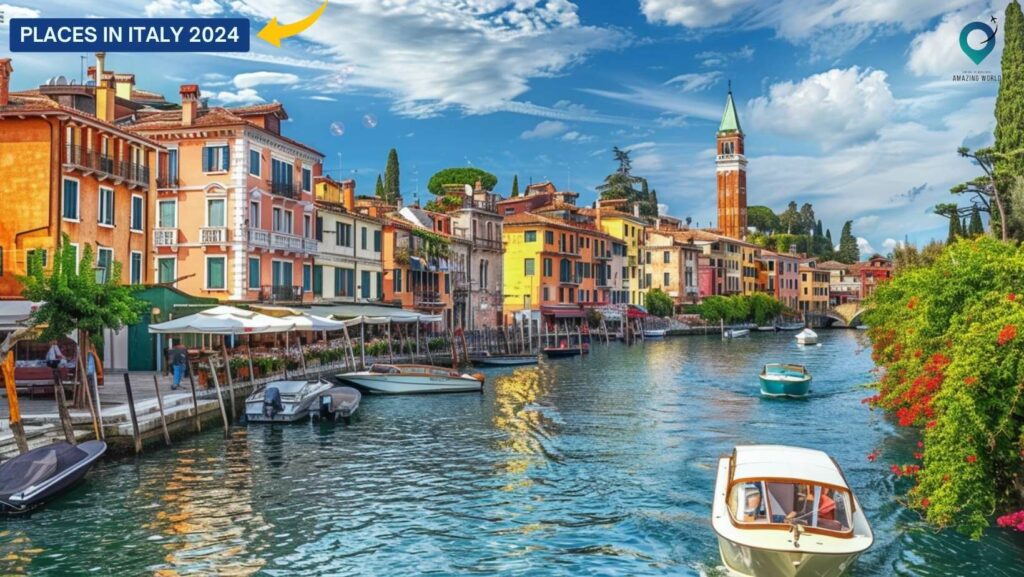
Are you excited to explore Italy’s most amazing places in 2024? Italy is known for its rich history, beautiful scenery, and lively culture. From Milan’s fashion scene to Venice’s romantic canals and Pompeii’s ancient ruins, each place offers something special.
Whether you love art, hiking, or trying delicious food like pizza in Naples, Italy has it all. Join us as we discover the top 20 places you must visit in Italy, each with its own unique charm and stories to tell.
1. Rome – Famous for ancient landmarks and lively culture.
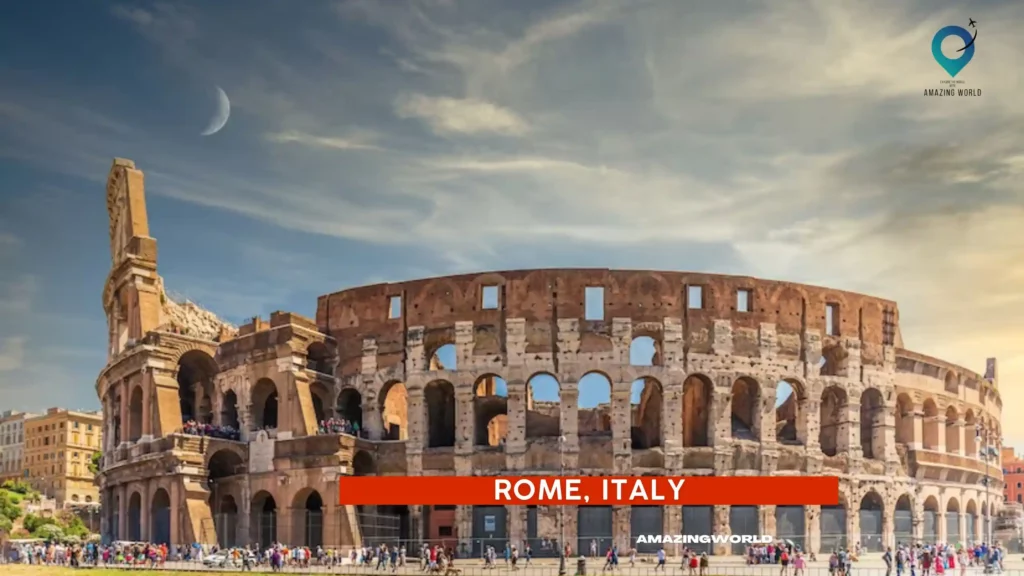
Rome, the capital city of Italy, is a timeless destination celebrated for its rich history, ancient landmarks, and vibrant culture. As you wander through the city streets, you’ll encounter iconic sights such as the Colosseum, where gladiators once battled, and the Roman Forum, a hub of ancient Roman political and social life.
Marvel at the grandeur of Vatican City, home to St. Peter’s Basilica and the Sistine Chapel, adorned with masterpieces by Michelangelo and other Renaissance artists. Rome is not just about its past; it’s a bustling metropolis where you can savor authentic Italian cuisine at trattorias tucked away in narrow alleys or sip espresso at sidewalk cafes while soaking in the lively atmosphere.
Whether you’re exploring the historic center, tossing a coin into the Trevi Fountain for good luck, or simply enjoying a gelato in Piazza Navona, Rome offers a blend of ancient marvels and contemporary charm that captivates every traveler.
2. Venice – Known for romantic canals and beautiful architecture.
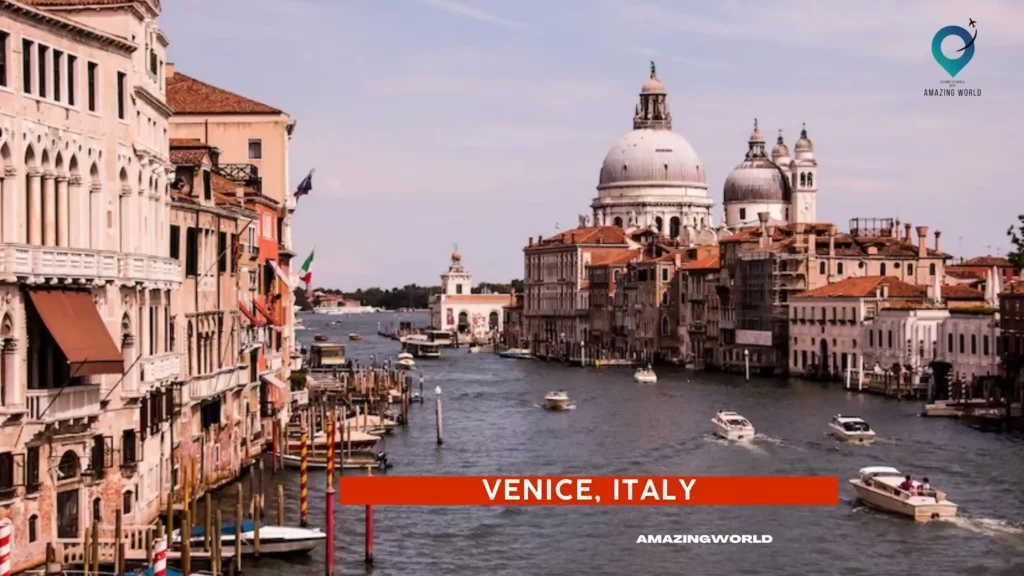
Venice, renowned for its romantic canals and stunning architecture, is a city unlike any other. Built on a network of 118 small islands separated by canals and connected by bridges, Venice captivates visitors with its unique charm and ethereal beauty. Glide along the Grand Canal on a gondola, passing elegant palaces and ornate bridges, or wander through narrow streets lined with centuries-old buildings adorned with intricate facades.
Discover iconic landmarks like St. Mark’s Basilica, a masterpiece of Byzantine architecture, and the Doge’s Palace, once the seat of Venetian political power. Venice’s allure extends beyond its historic sites; immerse yourself in the Venetian lifestyle by sampling local cicchetti (small bites) at lively bacari (wine bars) or attending a traditional opera performance.
Whether you’re exploring the bustling Rialto Market or enjoying a sunset over the lagoon from the Riva degli Schiavoni, Venice offers a romantic and enchanting experience that lingers in the hearts of all who visit.
3. Florence – Famous for Renaissance Art and Stunning Churches
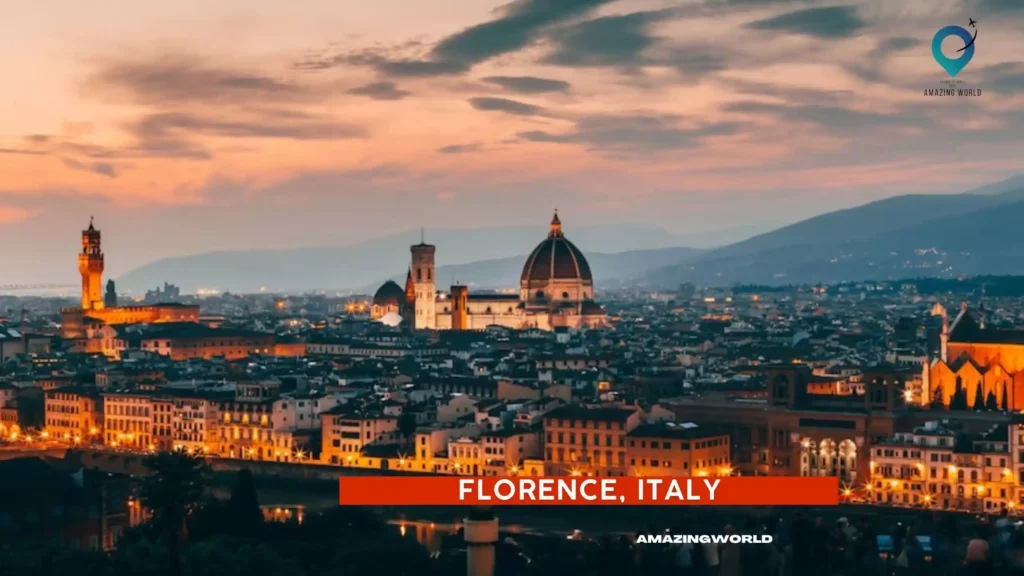
Florence is famous for its stunning art from the Renaissance period and its beautiful churches. It’s located in Tuscany, Italy, and was a center for trade and art during medieval times.
Today, it’s known for its world-class museums like the Uffizi Gallery and the Accademia Gallery, where you can see masterpieces by famous artists like Michelangelo and Leonardo da Vinci.
The city’s skyline is dominated by the impressive Duomo and Campanile bell tower. You can explore charming streets and discover historic sites like the Basilica di Santa Croce, where famous figures like Michelangelo are buried, or the Pitti Palace with its grand gardens. Florence is a perfect destination for art lovers and anyone interested in history and Italian culture.
4. Milan – Famous for Fashion and Iconic Sights
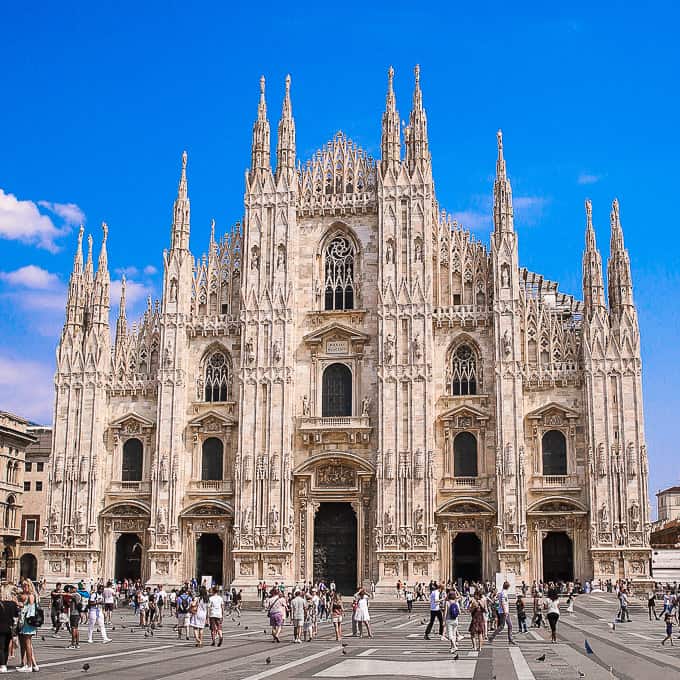
Milan, Italy’s bustling metropolis, stands out globally as a fashion powerhouse. Renowned for its haute couture, Milan hosts prestigious fashion events like Milan Fashion Week, drawing designers, models, and fashion enthusiasts from around the world. The city’s fashion district along Via Montenapoleone showcases luxury boutiques and designer stores, setting trends in the fashion industry.
Beyond fashion, Milan captivates visitors with its iconic sights. The centerpiece is the magnificent Gothic cathedral, Duomo di Milano, adorned with intricate spires and statues. Nearby, the historic Galleria Vittorio Emanuele II offers a glimpse into Milan’s architectural grandeur and houses upscale shops and cafes. Art enthusiasts can explore Leonardo da Vinci’s masterpiece, The Last Supper, at the Santa Maria delle Grazie church.
5. Amalfi Coast – Known for its Stunning Cliffs and Charming Villages

The Amalfi Coast epitomizes the allure of coastal Italy with its dramatic cliffs plunging into the azure Mediterranean Sea. This UNESCO-listed coastline stretches along the Sorrentine Peninsula, dotted with picturesque villages that cling to the cliffsides. Positano, with its pastel-colored houses cascading down to the sea, is a symbol of Amalfi’s charm and elegance.
Amalfi, the namesake town, boasts a rich history dating back to its maritime power in the Middle Ages, evident in its Byzantine-style cathedral. Visitors can explore the narrow alleys, visit artisan shops, and savor local delicacies like limoncello, made from the region’s famous lemons. The coastal road, known for its hairpin bends, offers breathtaking views of the Mediterranean, leading to Ravello, a peaceful hilltop town famed for its gardens and music festivals.
Both Milan and the Amalfi Coast offer distinct experiences that capture the essence of Italy—Milan with its cosmopolitan flair and fashion-forward culture, and the Amalfi Coast with its natural beauty and tranquil coastal lifestyle.
6. Cinque Terre – Famous for Colorful Villages and Scenic Hikes

Cinque Terre, a UNESCO World Heritage site nestled along the rugged Italian Riviera coastline, is renowned for its vibrant villages and stunning natural beauty. The name translates to “Five Lands,” encompassing five picturesque seaside villages: Monterosso al Mare, Vernazza, Corniglia, Manarola, and Riomaggiore. Each village is characterized by its pastel-colored houses perched on cliffs overlooking the Ligurian Sea.
Travelers flock to Cinque Terre for its scenic hikes along the coastal trails, offering panoramic views of the turquoise waters and terraced vineyards. The Sentiero Azzurro (Blue Trail) connects the villages, winding through vineyards and olive groves.
Visitors can explore the narrow alleys of Vernazza, relax on the rocky beaches of Monterosso, or admire the sunset from Manarola’s cliffside paths. Local cuisine features fresh seafood, pesto, and sciacchetrà wine, reflecting the region’s culinary delights.
7. Tuscany – Known for its Rolling Hills and Vineyard Views
Tuscany, synonymous with pastoral beauty and Renaissance art, captivates travelers with its serene landscapes and cultural richness. Located in central Italy, Tuscany is renowned for its rolling hills adorned with cypress trees, vineyards, and medieval hilltop towns. The region’s countryside, immortalized in countless artworks, offers a tranquil retreat amidst olive groves and sunflower fields.
The iconic city of Florence serves as Tuscany’s cultural heart, boasting world-class art museums like the Uffizi Gallery and architectural marvels like the Florence Cathedral and Ponte Vecchio bridge. In Siena, visitors can witness the historic Palio horse race and explore the Gothic cathedral and Piazza del Campo.
Tuscany’s culinary tradition is celebrated for its rustic simplicity, featuring dishes like ribollita soup, Chianina beef, and pecorino cheese. Wine enthusiasts can tour renowned vineyards in Chianti and Brunello di Montalcino, sampling fine wines amid panoramic vineyard views.
8. Pompeii – Famous for its Ancient Ruins and Historical Treasures
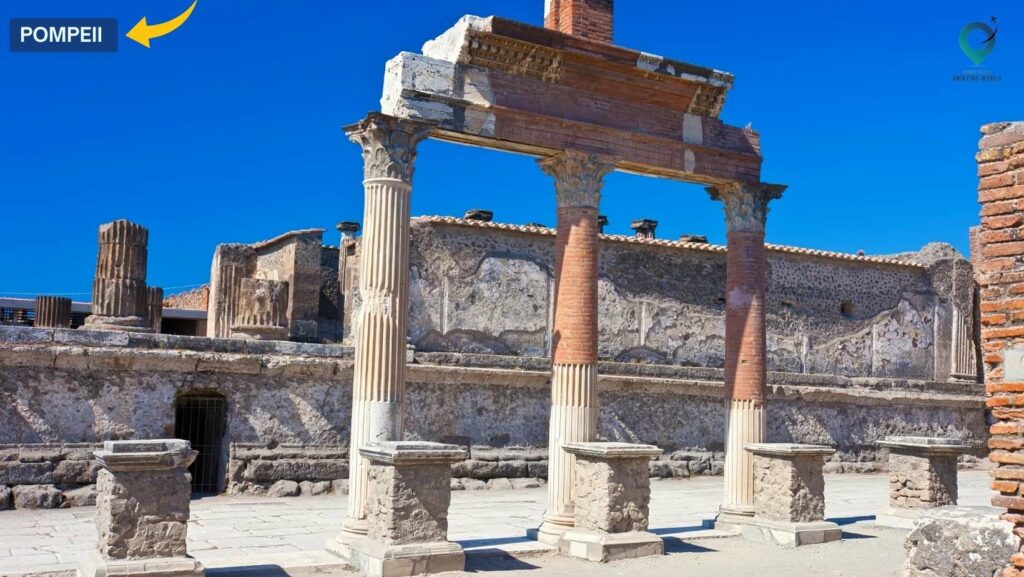
Pompeii, an ancient Roman city frozen in time by the catastrophic eruption of Mount Vesuvius in 79 AD, is a UNESCO World Heritage site and a window into the past. Located near Naples in southern Italy, Pompeii offers a glimpse into daily life during the Roman Empire through its remarkably preserved ruins and artifacts.
Visitors can wander through Pompeii’s streets, lined with ancient villas, baths, and temples adorned with vibrant frescoes and mosaics. The Forum, Pompeii’s central square, was the hub of civic life, surrounded by public buildings and markets.
The Villa of the Mysteries showcases exquisite frescoes depicting Dionysian rites. The Archaeological Museum of Naples houses artifacts recovered from Pompeii, including household items, jewelry, and sculptures, providing insights into Roman society and culture.
9. Capri – Known for its Glamorous Lifestyle and Natural Beauty
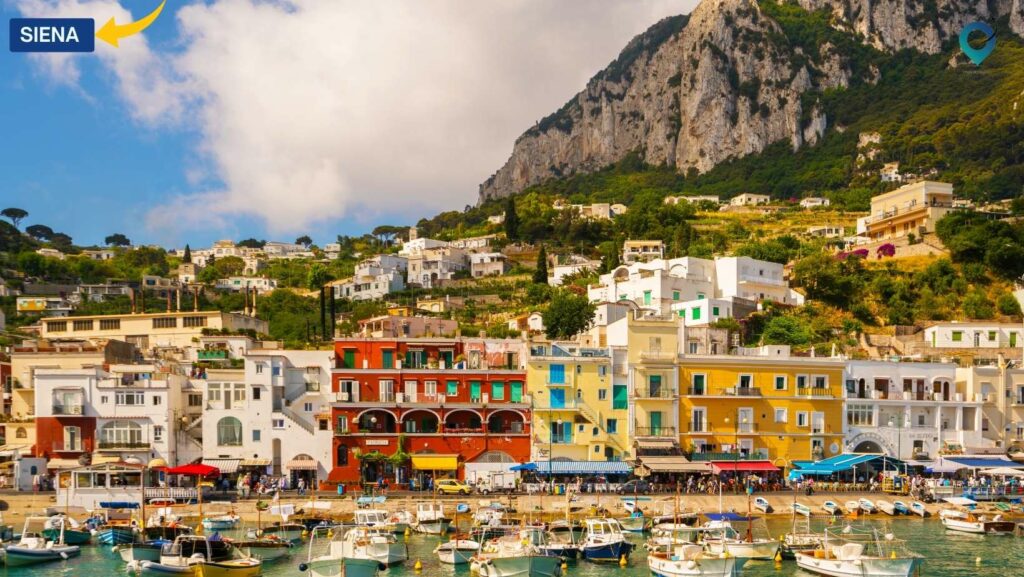
Capri, a stunning island located in the Tyrrhenian Sea off the Sorrentine Peninsula, is synonymous with luxury, elegance, and natural splendor. Renowned for its breathtaking landscapes and azure waters, Capri has been a favored destination since ancient Roman times, attracting emperors, artists, and celebrities alike.
The island’s glamorous lifestyle is reflected in its upscale boutiques, designer stores, and exclusive hotels that cater to discerning travelers seeking a lavish retreat. Visitors can explore Capri’s picturesque towns, such as Capri Town and Anacapri, with their charming streets, elegant villas, and panoramic viewpoints overlooking the Mediterranean Sea.
Natural beauty abounds on Capri, highlighted by the iconic Blue Grotto (Grotta Azzurra), a sea cave illuminated by iridescent blue light, and the rugged coastline dotted with hidden coves and limestone cliffs. Outdoor enthusiasts can hike along scenic trails like the Path of the Forts (Sentiero dei Fortini) or take a leisurely boat tour around the island to admire its sea caves and natural rock formations.
10. Verona – Famous for its Shakespearean Heritage and Roman Amphitheater
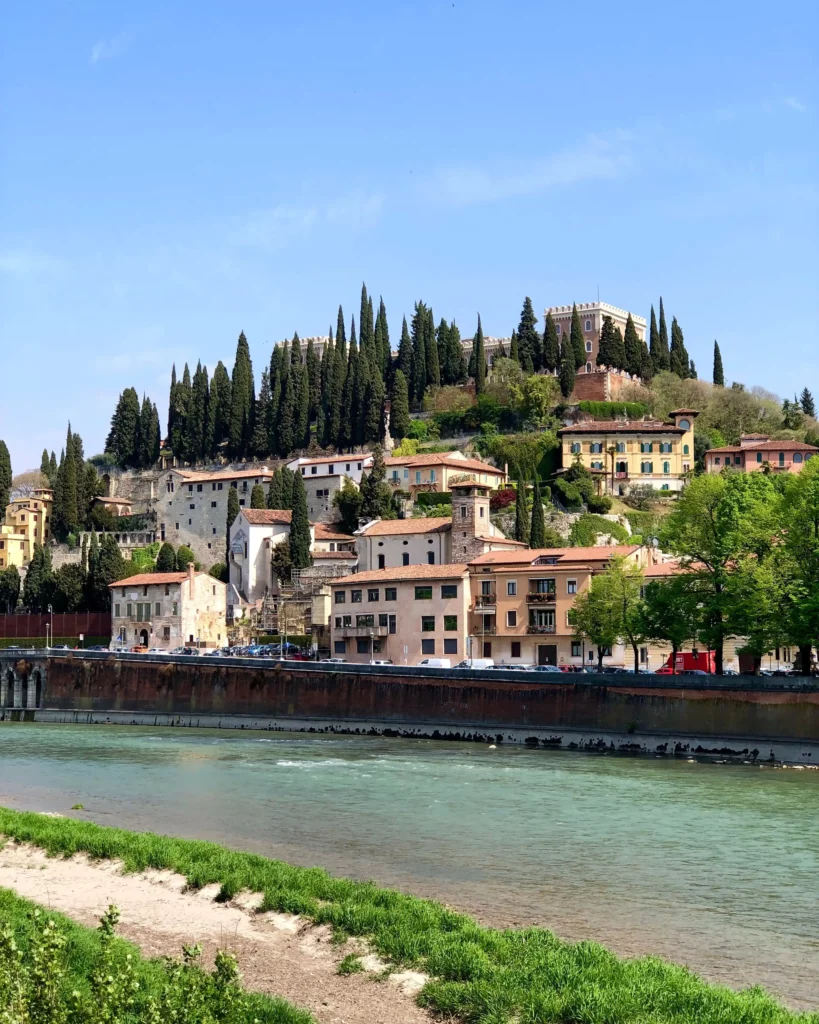
Verona, situated in Italy’s Veneto region, is a city steeped in history, culture, and romance. Best known as the setting for Shakespeare’s “Romeo and Juliet,” Verona evokes the timeless allure of tragic love against a backdrop of medieval architecture and ancient ruins.
The city’s star attraction is the well-preserved Roman amphitheater, known as the Verona Arena (Arena di Verona), which dates back to the 1st century AD. Today, it hosts world-class opera performances during the annual Arena di Verona Festival, drawing music lovers from around the globe to its majestic setting.
Verona’s historic center, a UNESCO World Heritage site, invites visitors to stroll through cobblestone streets lined with Renaissance palaces, churches adorned with exquisite frescoes, and bustling piazzas filled with vibrant cafes and markets.
Highlights include Juliet’s House (Casa di Giulietta), believed to be the inspiration for Shakespeare’s tragic heroine, and the elegant Piazza delle Erbe, once the site of Roman forums and now a lively square surrounded by medieval buildings.
11. Siena – Known for its Medieval Architecture and Exciting Horse Race:
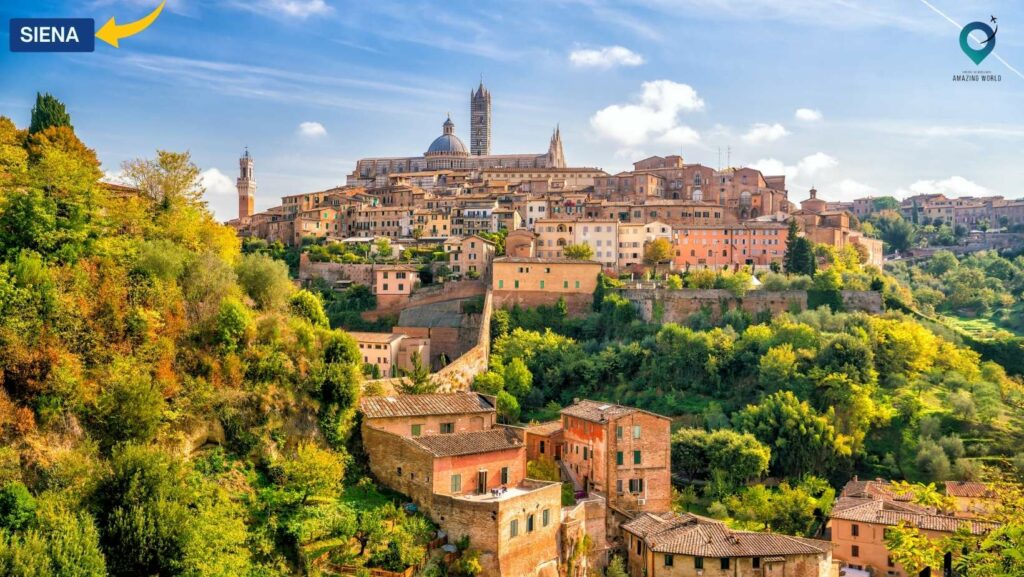
Siena, located in the heart of Tuscany, Italy, is renowned for its well-preserved medieval architecture and its historic Palio horse race. The city’s Gothic cathedral, Duomo di Siena, with its intricate facade and stunning marble interiors, stands as a testament to its rich cultural heritage. Visitors can wander through the narrow cobblestone streets of the city’s UNESCO-listed historic center, admiring medieval towers, grand palaces, and charming piazzas.
The Palio di Siena, a thrilling horse race held twice a year in the Piazza del Campo, captures the spirit of medieval pageantry and local pride. This centuries-old tradition sees ten horses and riders representing different city districts compete fiercely for victory, drawing crowds from around the world to witness this spectacular event.
12. Lake Como – Famous for its Serene Lake Views and Luxurious Villas:
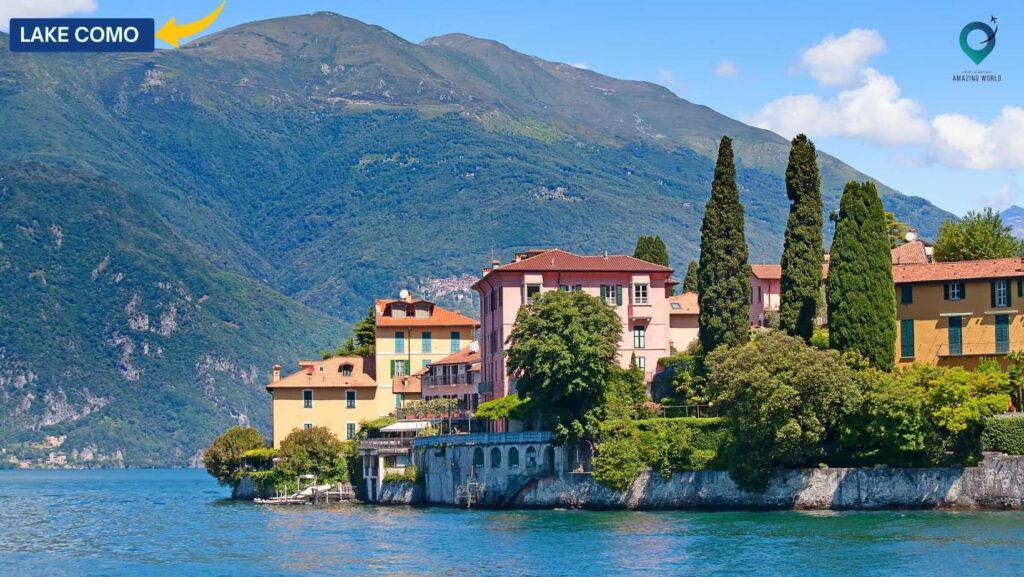
Lake Como, nestled at the foothills of the Italian Alps in northern Italy, is celebrated for its unparalleled natural beauty and opulent lakeside villas. Surrounded by lush mountains and dotted with picturesque villages, Lake Como has long been a retreat for artists, celebrities, and travelers seeking tranquility and inspiration.
Visitors can explore the charming lakeside towns of Bellagio, Varenna, and Como itself, each offering panoramic views of the shimmering lake and the snow-capped peaks beyond. The lake’s elegant villas, such as Villa del Balbianello and Villa Carlotta, showcase lavish gardens, ornate architecture, and historical artifacts, reflecting the region’s aristocratic past.
Activities on Lake Como range from leisurely boat cruises and water sports to scenic hikes along the lake’s verdant shores. Whether savoring local cuisine at waterfront restaurants or simply relaxing in the serenity of its surroundings, Lake Como captivates visitors with its timeless allure and natural splendor.
13. Naples – Known for its Rich History and Delicious Pizza:
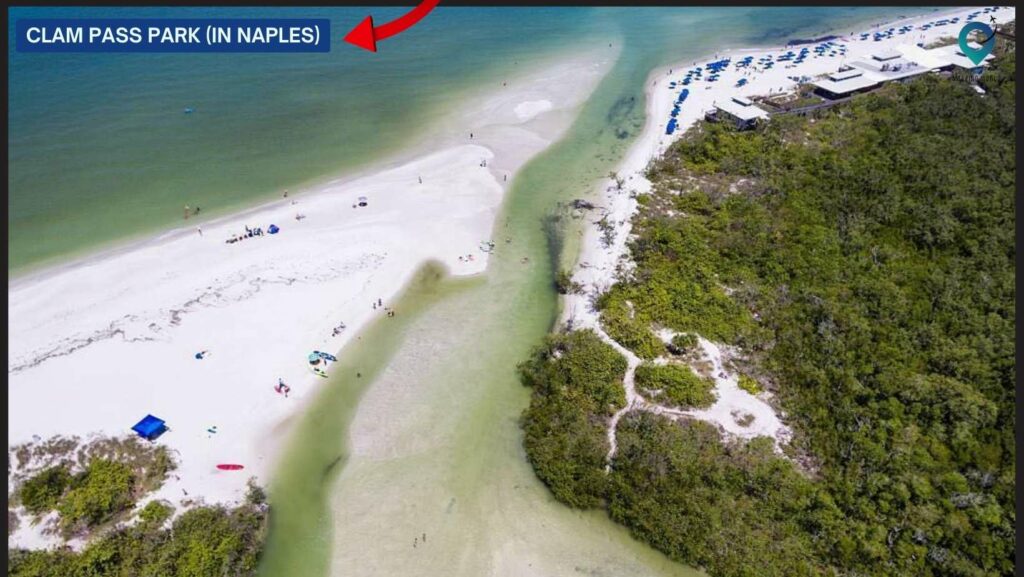
Naples, located in southern Italy overlooking the Bay of Naples and Mount Vesuvius, is a city steeped in history, art, and culinary tradition. As one of the oldest continuously inhabited cities in the world, Naples boasts a wealth of archaeological treasures, including the ancient Roman city of Pompeii and the lavish Royal Palace of Naples.
The city’s historic center, a UNESCO World Heritage site, invites exploration with its narrow alleys, Baroque churches adorned with masterful frescoes, and vibrant street life. Naples is also renowned as the birthplace of pizza, offering visitors the chance to savor authentic Neapolitan pizza topped with fresh mozzarella, San Marzano tomatoes, and fragrant basil—a culinary experience not to be missed.
Beyond its culinary delights, Naples is a cultural hub with world-class museums like the National Archaeological Museum, home to artifacts from Pompeii and Herculaneum. Visitors can also embark on day trips to the Amalfi Coast or the islands of Capri and Ischia, each offering their own unique charm and natural beauty.
14. Bologna – Famous for its Food Scene and Medieval Buildings:
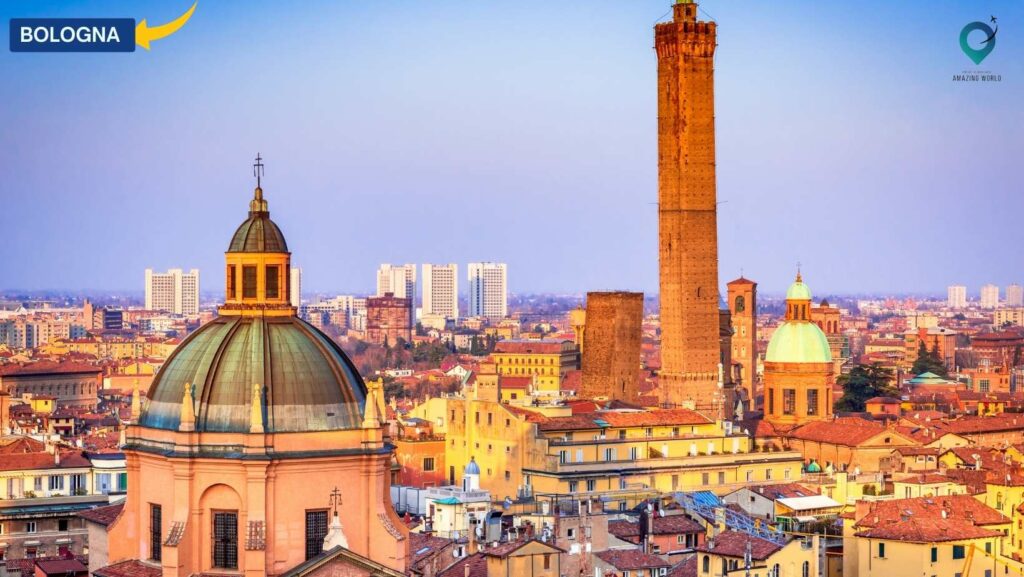
Bologna, often called “La Grassa” (the fat one) for its rich culinary tradition, is a city in northern Italy known for its delectable cuisine and well-preserved medieval architecture. As the capital of the Emilia-Romagna region, Bologna boasts a vibrant food scene centered around its famous fresh pasta dishes like tortellini and tagliatelle, paired with savory ragù sauce. The city’s bustling markets, such as the Mercato di Mezzo, offer a feast for the senses with local delicacies like mortadella, Parmigiano Reggiano cheese, and balsamic vinegar.
Beyond its culinary delights, Bologna’s historic center, with its terracotta-roofed buildings and elegant porticoes, reflects its medieval past. The iconic Two Towers, Asinelli and Garisenda, provide panoramic views of the city skyline and surrounding hills. Visitors can explore landmarks like the Piazza Maggiore, home to the grand Basilica di San Petronio and the Neptune Fountain, or stroll through the University Quarter, housing one of the world’s oldest universities.
15. Sicily – Known for its Diverse Culture and Ancient Greek Ruins:
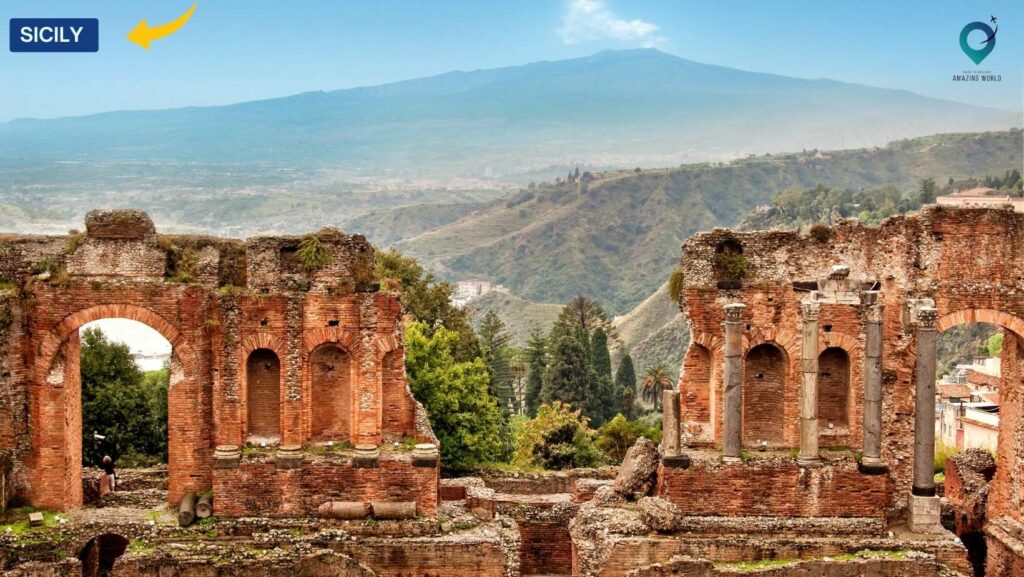
Sicily, the largest Mediterranean island off the southern coast of Italy, is celebrated for its rich cultural tapestry, spanning Greek, Roman, Arab, Norman, and Baroque influences. The island’s capital, Palermo, showcases a vibrant street life, bustling markets like the Ballarò, and architectural marvels such as the Palermo Cathedral and the Palazzo dei Normanni.
Ancient Greek ruins, including the well-preserved Valley of the Temples near Agrigento and the ancient theater of Taormina overlooking Mount Etna, highlight Sicily’s historical significance. The island’s culinary heritage blends Arabic spices, fresh seafood, and locally grown citrus fruits into dishes like arancini (rice balls) and cannoli (sweet pastries).
Visitors to Sicily can also explore natural wonders like the smoking crater of Mount Etna, Europe’s highest active volcano, or unwind on sandy beaches along the azure waters of the Mediterranean. From the mosaics of the Villa Romana del Casale to the picturesque coastal towns of Cefalù and Syracuse, Sicily offers travelers an unforgettable blend of history, culture, and natural beauty.
16. Pisa – Famous for its Leaning Tower and Historic Landmarks:
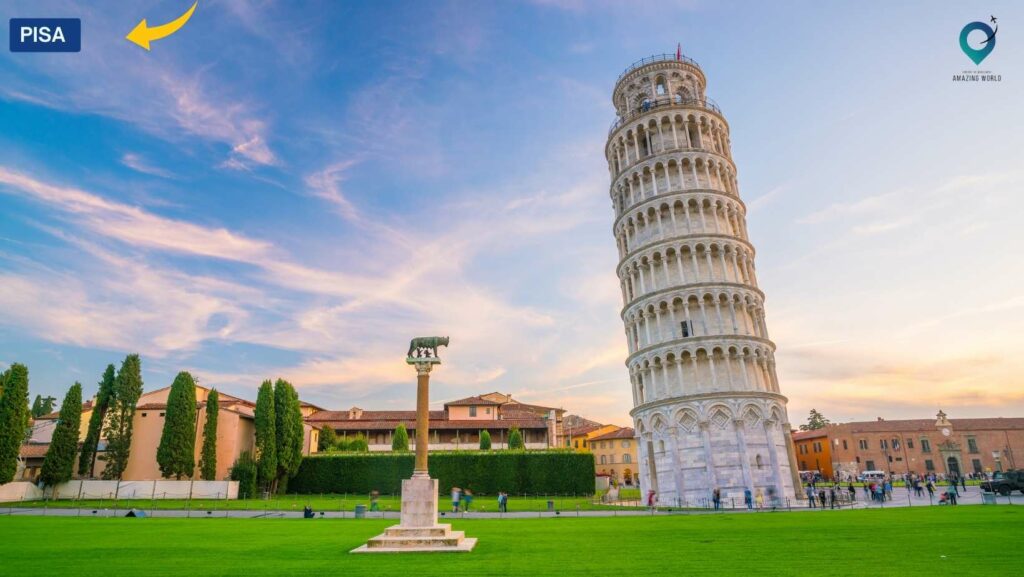
Pisa, a city in Tuscany, Italy, is renowned worldwide for its iconic Leaning Tower, a symbol of architectural curiosity and ingenuity. The Leaning Tower of Pisa, part of the Piazza dei Miracoli (Square of Miracles), leans due to a foundation sinking into unstable soil during its construction in the 12th century. Visitors flock to the site to marvel at its lean and climb its spiral staircase for panoramic views of Pisa.
Beyond the Leaning Tower, Pisa boasts other historic landmarks like the Pisa Cathedral, a masterpiece of Romanesque architecture with its intricate facade and impressive interior. The Baptistery and the Camposanto Monumentale (Monumental Cemetery) complete the architectural ensemble in the Piazza dei Miracoli, a UNESCO World Heritage site.
Pisa’s charm extends beyond its architectural wonders, offering visitors picturesque riverside walks along the Arno River, vibrant street markets, and a lively university atmosphere. The city’s rich cultural heritage, combined with its culinary delights like local Tuscan cuisine and wines, ensures a memorable experience for travelers exploring this historic Tuscan gem.
17. Matera – Known for its Ancient Cave Dwellings and Unique History:

Matera, located in the Basilicata region of southern Italy, is renowned for its ancient cave dwellings, known as Sassi, carved into the rugged limestone cliffs. These cave dwellings, dating back to prehistoric times, were inhabited continuously until the mid-20th century and now form a UNESCO World Heritage site. Visitors can explore the winding alleys and staircases of the Sassi districts, discovering ancient churches, cave dwellings turned into boutique hotels, and panoramic viewpoints overlooking the Gravina River.
Matera’s unique history is reflected in its architecture, blending Byzantine, Romanesque, and Baroque influences. The city’s Cathedral, dedicated to the Virgin Mary, showcases stunning frescoes and architectural details, while the Caveoso and Barisano districts offer insights into the daily life of Matera’s past inhabitants.
Today, Matera is not only a cultural treasure trove but also a vibrant cultural center, hosting events like the Matera European Capital of Culture in 2019. Its culinary scene features local specialties such as pane di Matera (Matera bread) and caciocavallo podolico cheese, complemented by the warmth of traditional hospitality and the timeless beauty of its ancient landscapes.
18. Dolomites – Famous for its Stunning Alpine Scenery and Hiking Trails:
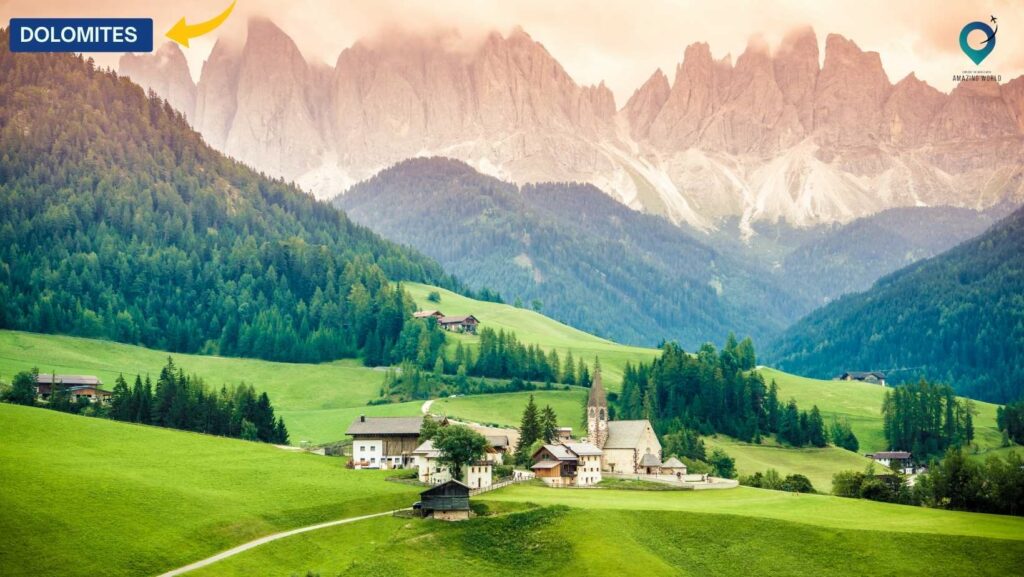
The Dolomites, located in northeastern Italy, are renowned worldwide for their breathtaking Alpine landscapes characterized by towering peaks, dramatic cliffs, and lush green valleys. Designated as a UNESCO World Heritage site for their unique geological features, the Dolomites attract outdoor enthusiasts and nature lovers alike. Visitors can explore a network of well-marked hiking trails that wind through meadows adorned with wildflowers, crystal-clear lakes reflecting the surrounding mountains, and dense forests teeming with wildlife.
In winter, the Dolomites transform into a paradise for skiing and snowboarding, with world-class resorts like Cortina d’Ampezzo offering exhilarating slopes against a backdrop of jagged limestone peaks. Throughout the year, charming Alpine villages nestled among the mountains provide opportunities to experience local culture, cuisine, and traditions. Whether admiring the sunset from Passo Pordoi or ascending the iconic Tre Cime di Lavaredo, the Dolomites promise unforgettable adventures in one of Europe’s most awe-inspiring natural settings.
19. Assisi – Known for its Spiritual Significance and Medieval Charm:
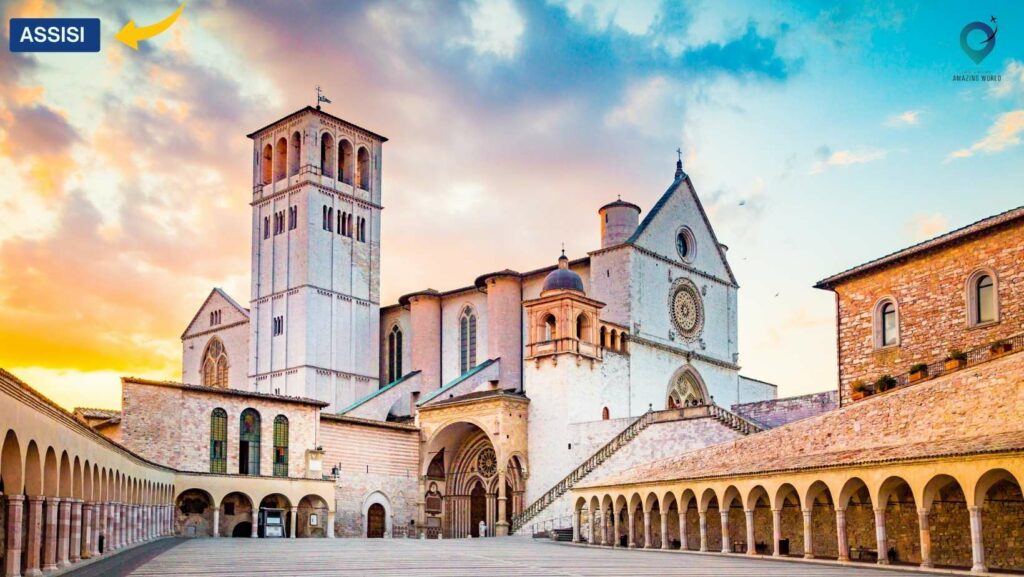
Assisi, a hill town in central Italy’s Umbria region, holds profound spiritual significance as the birthplace of Saint Francis, one of Italy’s patron saints. Revered for his dedication to poverty, peace, and environmental stewardship, Saint Francis left a lasting legacy that permeates Assisi’s medieval streets, historic churches, and tranquil landscapes. The Basilica of Saint Francis, a UNESCO World Heritage site, houses masterpieces of medieval art, including frescoes by Giotto depicting the life of Saint Francis.
Beyond its religious heritage, Assisi captivates visitors with its well-preserved medieval architecture, narrow cobblestone streets lined with artisan shops, and panoramic views of the Umbrian countryside. The town’s charming piazzas, such as Piazza del Comune and Piazza Santa Chiara, invite leisurely strolls and opportunities to savor local Umbrian cuisine, renowned for its simplicity and use of fresh, regional ingredients. Whether exploring the Rocca Maggiore fortress overlooking Assisi or attending the annual Calendimaggio festival celebrating spring, Assisi offers a timeless journey into Italy’s spiritual and cultural heritage.
20. Turin – Famous for its Beautiful Baroque Architecture and Royal Palaces:

Turin, the capital of Italy’s Piedmont region, boasts a rich cultural heritage defined by its elegant Baroque architecture, grand boulevards, and regal palaces. As the first capital of a unified Italy, Turin is steeped in history and artistic splendor, exemplified by landmarks such as the Palazzo Reale (Royal Palace) and the Palazzo Madama, both former residences of the House of Savoy.
Turin’s Baroque charm is further enhanced by its expansive squares, including the Piazza Castello and Piazza San Carlo, adorned with historic cafes and ornate fountains. The city’s cultural scene thrives with world-class museums such as the Egyptian Museum, home to one of the most extensive collections of Egyptian antiquities outside Cairo, and the Mole Antonelliana, housing the National Museum of Cinema.
Turin’s culinary delights range from traditional Piedmontese dishes like agnolotti pasta and bagna cauda to decadent chocolates and fine wines, ensuring a sensory journey through Italy’s royal past and vibrant present.
Conclusion
Italy’s diverse and captivating destinations offer a blend of natural beauty, rich history, and cultural treasures that appeal to travelers from around the globe. From the stunning Alpine landscapes of the Dolomites to the spiritual significance of Assisi and the Baroque elegance of Turin, each place unfolds a unique story waiting to be discovered.
Whether you’re drawn to ancient ruins, Renaissance art, picturesque coastlines, or culinary delights, Italy promises unforgettable experiences that celebrate its timeless charm and enduring allure.
Whether embarking on a journey through its historic cities or exploring its breathtaking countryside, Italy invites travelers to immerse themselves in a tapestry of experiences that resonate with the heart and soul of this remarkable country.
How much did you like Our detailed Top 20 Must-Visit Places in Italy 2024: Explore the Best Destinations? Review Also, please share these Blogs with your friends on social media.
- Travel Hacks
- 12-Ways to Keep Kids Entertained
- Travel Tips for Single Parents
- Top travel tips for seniors

Meet David Hoper, a passionate travel Blog writer with 7+ years of experience in travel content. Through his exemplary storytelling and engaging narratives, he shares his experiences and brings destinations to life. With a keen eye for detail and a love for exploration, he has cultivated a diverse portfolio of travel blogs that inspire and inform readers worldwide.
